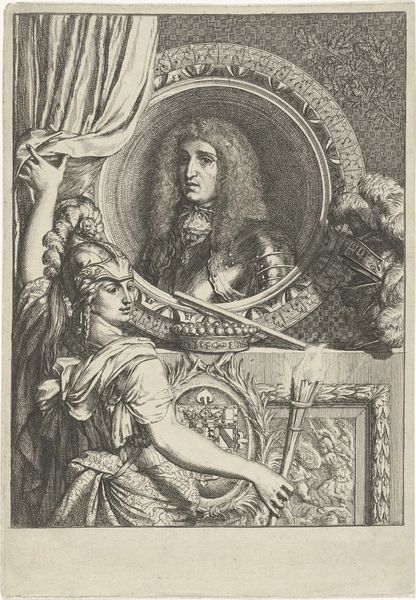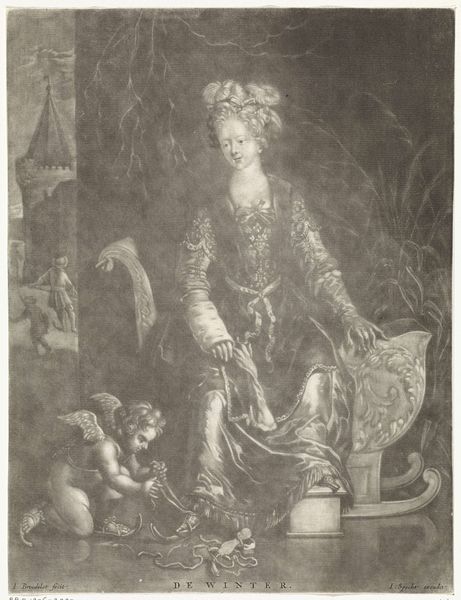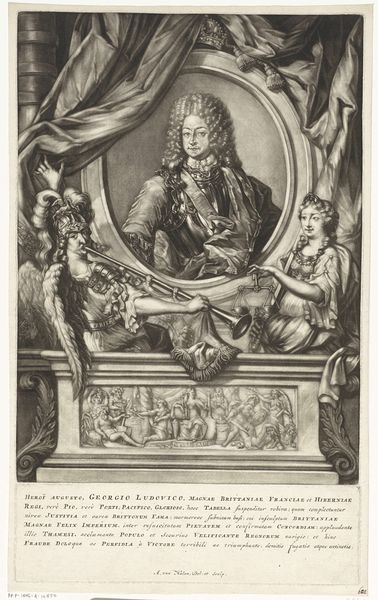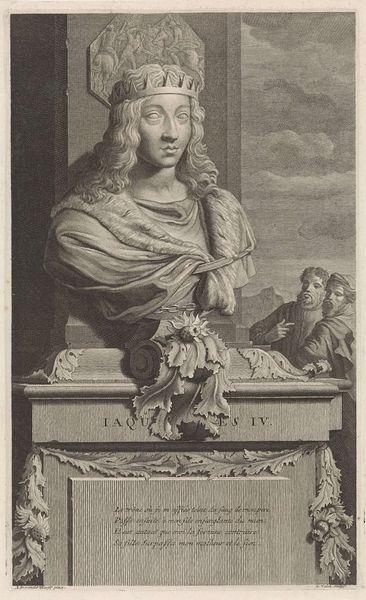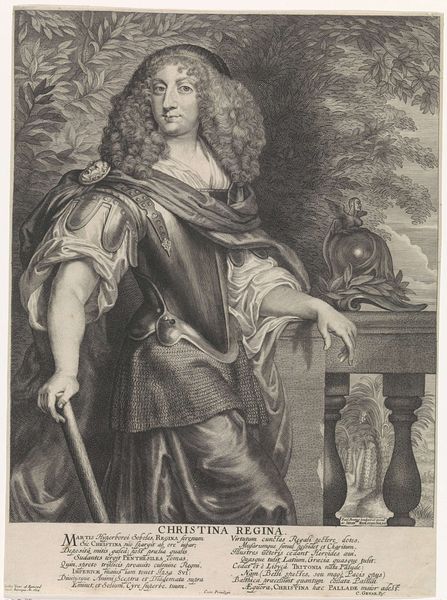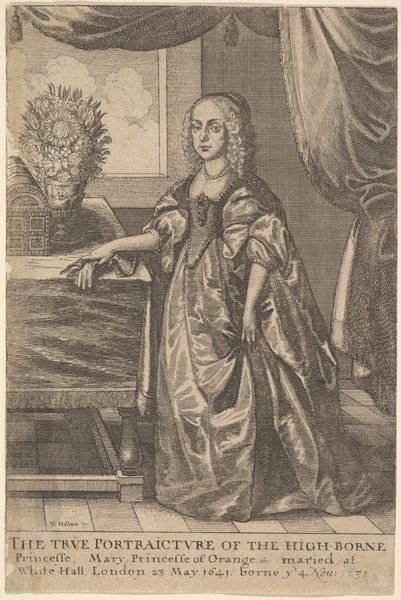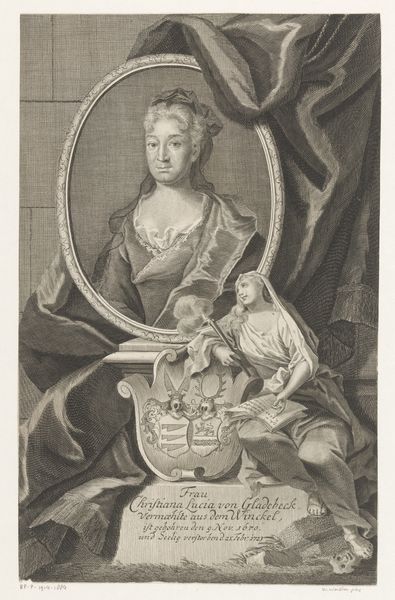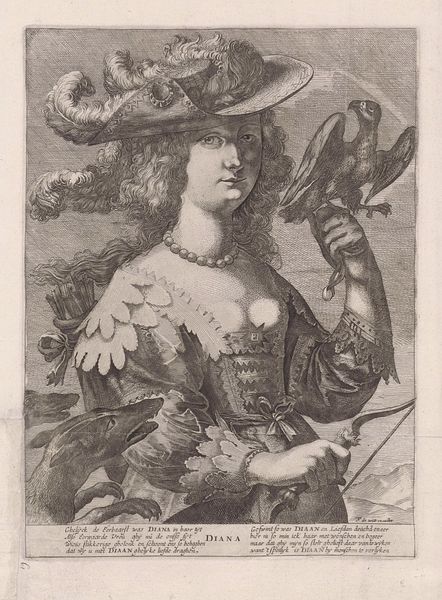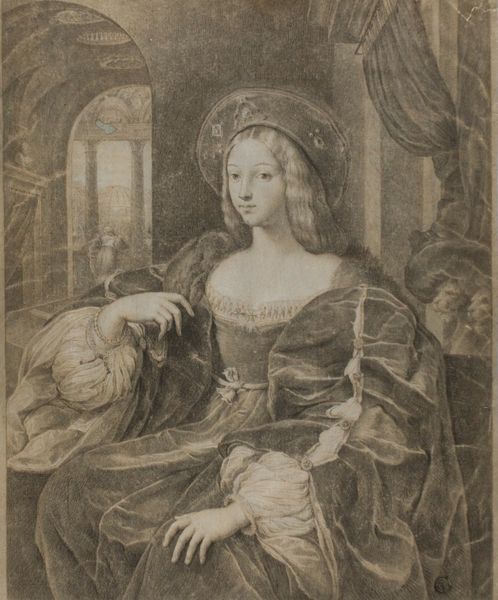
drawing, charcoal
#
portrait
#
drawing
#
baroque
#
dutch-golden-age
#
charcoal drawing
#
figuration
#
charcoal
#
history-painting
#
academic-art
#
charcoal
Dimensions: height 256 mm, width 201 mm
Copyright: Rijks Museum: Open Domain
Ferdinand Bol rendered this drawing, Minerva in her Study, with pen in gray and brown ink and brush in gray, around the mid-seventeenth century. Here, Minerva, the Roman goddess of wisdom and strategic warfare, sits adorned with a laurel wreath, a symbol of victory and intellectual prowess. The open book beneath her hand invites us to consider the weight of knowledge and its interpretation. But, what is that terrifying grimace hovering over her shoulder? Consider, now, how in ancient Greece, masks were used in theater to amplify emotions. That menacing visage echoes the Gorgon Medusa, whose petrifying gaze served as both a shield and a curse. We find similar symbols in other contexts, such as Renaissance emblems that merge wisdom with war, mirroring how societies grapple with power and enlightenment. This layering of symbols embodies a potent psychological drama, engaging us on a visceral level, triggering our collective memory of fear and awe. This complex layering demonstrates how symbols continually resurface, evolving and adopting new meanings across historical contexts.
Comments
No comments
Be the first to comment and join the conversation on the ultimate creative platform.

